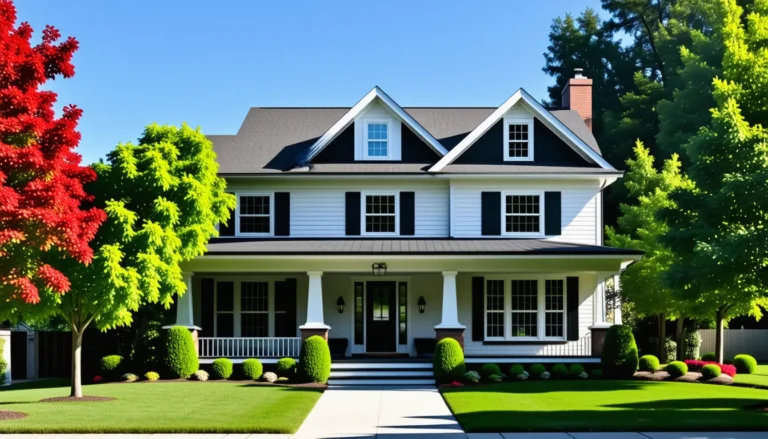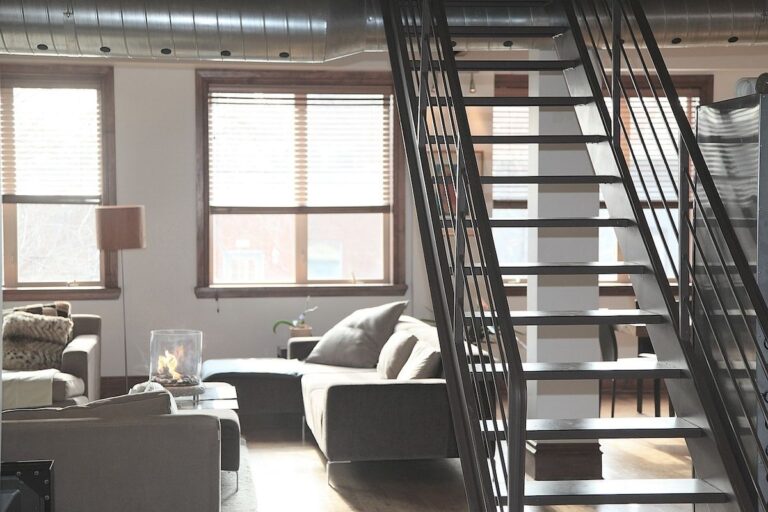Maximize rental income by transforming unused spaces
Maximize Unused Space for Extra Income
In order to reduce housing costs in retirement, one of the most flexible options is to maximize unused space within your current home and transform it into an income generator. Whether it’s a spare bedroom, a basement, or even a cozy guesthouse in the backyard, there are countless ways you can turn those infrequently used areas into a consistent income stream. This strategy might seem a bit outside the box for some, but for my cyberpunk-spirited retirees, it’s all about making your home work for you, not the other way around.
Reduce Housing Costs by Renting Out Unused Rooms
With living expenses rising, many retirees find they don’t need as much square footage as before. Kids have moved on, leaving behind empty bedrooms and vast deserted spaces. Instead of letting those areas gather dust, consider renting them out to short- or long-term tenants. Platforms like Airbnb or VRBO offer you modern, user-friendly ways to manage your space and meet potential renters, making this a perfect scenario for turning those empty rooms into a lucrative opportunity.
For those leaning towards more permanent options, you can opt for traditional long-term leases to reliable renters. Both options will provide you with a stream of passive income, allowing you to cover expenses like maintenance, utilities, and insurance, effectively reducing your housing costs in retirement while keeping your pocketbook in check.
Convert Your Garage or Basement into a Rental Unit
Think about the garage that’s currently holding outdated tech or your basement that’s filled with old memories. Both spaces could be easily remodeled and converted into income sources. While there might be an initial investment to modernize or upgrade these areas to meet local zoning laws and safety standards, the potential return on investment is definitely worth considering.
A converted basement apartment or garage studio can easily become a sought-after rental, especially if you’re in an urban area where space is at a premium. Tenants seek out smaller, efficient living spaces, and you’re sitting on one already! The key here is to figure out your local property zoning requirements and determine what’s permissible on your land. By doing so, you can be well on your way towards reducing housing costs in retirement while making the most out of every nook and cranny.
Transform Part of Your Property for Short-Term Stays
If you don’t want the commitment of permanent roommates, short-term rental models could be your ideal choice. Retirees can often afford to maintain some flexibility in their daily lives, so why not take it a step further and capitalize on travelers looking for unique accommodations?
Platforms like Airbnb turn your unused studio, guesthouse, or converted garage into a high-demand rental property for weekend warriors and business nomads. While there might be extra work involved in managing bookings, cleaning, and maintaining the property, the potential for high returns is strong. With rates easily surpassing traditional leases in certain neighborhoods, it’s certainly a powerful way to help reduce housing costs in retirement.
Split Your Home: The Multi-Unit Conversion
Feeling bold? Another option to consider is dividing your single-family house into a multi-family rental. This initiative may seem daunting, but it’s been gaining popularity among retirees who wish to stay put while significantly reducing living expenses. By turning your single-family home into a duplex or triplex, you can live in one unit and lease out the others. It’s the ultimate retirement hack for cutting costs without changing your surroundings.
This path might involve a bit more planning and upfront costs, including rezoning approvals or architectural consultations. But once sorted, splitting your home offers long-term financial benefits that directly reduce housing costs in retirement. Your tenants help offset your own living expenses like mortgage, maintenance, and utilities, and you get to stay in the familiar comfort of your home’s neighborhood.
Focus on Energy-Efficient Upgrades for Rental Appeal
With today’s tech-driven world, renters are increasingly on the hunt for energy-efficient homes. If you’re planning on renting out your unused space, it pays to upgrade your home with eco-friendly features like smart thermostats, energy-efficient appliances, and LED lighting. Not only do these upgrades make your property more appealing to prospective tenants, but they also help slash your utility bills, adding to the list of ways you’re efficiently reducing housing costs in retirement.
Whether you’re renting a single extra room or turning your entire home into a multi-rental unit, transforming your space for extra income is a solid strategy to supplement your retirement budget. With tech, zoning, and a few energy-efficient upgrades, you can easily take control of your finances and live the retirement you deserve—without downsizing your lifestyle.
Downsize and Relocate to Cut Expenses
When it comes to strategically reducing housing costs in retirement, downsizing is one of the most effective methods that retirees can embrace. In a cyberpunk reality where every square inch counts, shifting to a smaller, more manageable home automatically trims down various overhead costs such as utilities, maintenance, and property taxes. Downsizing isn’t just about saving money—it’s about gaining freedom, minimizing stress, and optimizing your resources for the long term. Let’s dive into why downsizing could be your ultimate hack for cutting costs without sacrificing comfort.
Smaller Homes, Lower Bills
I know it sounds straightforward, but you’d be surprised how many retirees overlook the sheer power of shifting to a smaller residence. Imagine taking care of only what you need. With less space, your utility bills immediately decrease, as there’s far less space to heat, cool, and generally maintain. A smaller house often means fewer square feet to clean, repair, and furnish—all of which contribute to reducing housing costs in retirement.
Additionally, smaller homes tend to have lower property taxes and insurance premiums, given the home’s market value is typically reduced as the size decreases. This streamline effect makes downsizing an essential consideration for budget-conscious retirees looking to stretch their fixed income further.
Leverage Equity from Your Current Home
If you’ve owned a larger home for several years, chances are you’ve built up a substantial amount of equity. Instead of letting that equity stay locked in your property while maintenance costs skyrocket, downsizing allows you to tap into those funds. By selling the bigger home and relocating to a smaller, more affordable space, you can pocket the difference as cash. This extra liquidity not only boosts your retirement savings but also offers peace of mind, as you now have a financial cushion to cover unforeseen expenses.
This cash infusion can be used to pay for healthcare, travel, hobbies you now have time for, or even to further reduce housing costs—perhaps to pay off the mortgage on your new, downsized property. Locking in a zero-mortgage lifestyle could be a game-changer in your golden years, literally freeing you from monthly housing payments.
Relocate for a Lower Cost of Living
Beyond just downsizing your home’s footprint, relocating to a new area with a lower cost of living can further help reduce housing costs in retirement. Depending on where you currently reside, moving to another state or country can drastically cut down costs like taxes, real estate prices, and health care expenses. Hot regions like Florida and Arizona are popular choices due to their retiree-friendly tax structures and lower living costs. However, true cyberpunks might even want to consider relocating out of the country—a digital nomad lifestyle doesn’t have to stop with a 9-to-5 job!
In many international destinations such as Mexico or Portugal, retirees can significantly lower their overhead costs. Monthly expenses in these locales are often a fraction of what they would be in major US cities, and the quality of life remains high. Imagine sipping your morning coffee under palm trees while knowing you’re living your best life at a much lower price tag.
Condos and 55+ Communities: Simplifying Home Ownership
For those less inclined to relocate far, there’s still the option of transitioning into specialized housing, like condos or 55+ communities. These living arrangements offer retirees more than just space—many come with built-in maintenance services, reducing your need to worry about mowing the lawn, fixing broken pipes, or shoveling snow. While HOA fees are common, these tend to balance out with the convenience of having major maintenance taken off your plate, making your retirement smoother and more efficient.
On top of that, condos and senior living communities often provide communal activities and social opportunities, which can help combat loneliness. These added amenities, combined with hassle-free living, provide an excellent balance of lifestyle and financial comfort, ensuring you’re not just downsizing your home but truly upgrading your quality of life while reducing housing costs in retirement.
What to Do with the Extra Cash
Downgrading doesn’t have to feel like you’re giving something up—in many ways, it’s an opportunity to reallocate resources for the things that matter most to you. The extra equity from selling your larger home could be put toward long-term healthcare, travel, or a dream hobby you’ve always wanted to pursue. Downsizing gives you an opportunity to reduce household expenses without reducing your lifestyle.
Imagine trading in your four-bedroom suburban fortress for a sleek, modern, energy-efficient home or eco-friendly tiny house. You cut down major costs like utilities and property taxes, all while receiving a substantial cash infusion from the sale of your old place. The result? A powerful reduction in stress and an uplift in disposable income, all working toward reducing housing costs in retirement and enhancing your overall quality of life.
With downsizing and relocation, there’s no single formula. Whether it’s selling your current property for a mini-mansion in a low-cost area, or embracing a condo lifestyle that removes all home-maintenance headaches, downsizing is your key to crafting a retirement that caters to both your financial and personal needs.
Use Tax Strategies and Sell Unneeded Assets
In the quest for reducing housing costs in retirement, tax strategies and the sale of unneeded assets play pivotal roles. While many retirees focus on downsizing and income-generating efforts, tax benefits are often overlooked, despite their potential to unlock significant savings. With the ever-evolving tax codes in this cyberpunk age, staying ahead of the curve means strategizing to make sure your home is working for your wallet. And when combined with selling unnecessary holdings, these approaches can significantly lessen the financial burden of homeownership during your golden years.
Take Advantage of Homeowner Tax Deductions
The first stop on this money-saving mission is ensuring you’re taking full advantage of all available homeowner tax deductions. This could include deductions for mortgage interest, property taxes, and unique cases like home office deductions if you’re running any side gigs or consulting ventures in retirement. These deductions directly contribute to reducing housing costs in retirement by minimizing your taxable income and ensuring more of your funds stay where they belong—right in your hands. Consult with a tax professional to comb through available tax credits, especially those relating to energy efficiency or medical modifications made to your home.
For instance, under the current tax code, you can claim deductions for any improvements that increase your home’s energy efficiency. That rooftop solar panel installation? It could not only reduce your electricity bills but also provide tax breaks to make sure Uncle Sam helps you bear the upfront cost. Lower ongoing bills combined with potential tax credits give you a double win for your retirement savings strategy.
Capital Gains Exclusion on Home Sales
If relocating or downsizing is part of your retirement plan, then the capital gains exclusion on the sale of your primary residence can be a big help in reducing housing costs in retirement. Under current tax law, you may exclude up to 0,000 of capital gains if you’re single, and up to 0,000 for married couples filing jointly—so long as you’ve lived in the home for two of the last five years. This means that if you’ve owned your home for several decades, chances are, you can sell it with significant gains and avoid a hefty tax hit, putting more money back into your pocket.
Let’s imagine this futuristic scenario: you’ve held on to your tech-fueled family home for 30 years, and now plan to move to a sleek, one-bedroom condo designed with smart home technology. The proceeds from the sale will likely result in substantial gains, but no worries—thanks to the capital gains exclusion, you’ll walk away with most, if not all, of that equity intact. Invest some of that windfall wisely, and suddenly, your next move becomes more about enjoyment than staying financially afloat.
Reduce Property Taxes by Relocating
Depending on where you currently live, property taxes might be eating up a significant chunk of your budget. Another compelling case for relocating is that different areas—both in the United States and abroad—offer more favorable property tax structures, which can play a crucial role in reducing housing costs in retirement.
States like Florida and Arizona, notorious for being retirement havens, not only boast retiree-friendly climates but also offer lower property taxes and even property tax exemptions for retirees. Some countries abroad, like Portugal, offer tax advantages that could sweeten your relocation deal. Lower property taxes, combined with a reduced cost of living, mean more savings without having to compromise on quality of life.
Cut Costs by Selling Unnecessary Real Estate
For retirees looking to streamline their assets, selling unneeded real estate is a strategic move for reducing housing costs in retirement while freeing up capital for other ventures or securing a more comfortable nest egg. While holding onto that extra plot of land or second home may have once seemed like a savvy idea, these pieces of real estate can eventually become burdens. Maintenance costs, property taxes, and insurance add up—especially if these properties are not generating income.
Think of it this way: if you’ve got a second home that sits vacant for most of the year, consider selling it to avoid the extra utility and maintenance costs. Turning those non-performing assets into liquidity can provide you with funds that could be reinvested in health care plans, travel, or renovating your downsized property. By minimizing your real estate footprint, you’ll also shed some responsibilities and enjoy a more care-free retirement vibe. After all, why complicate your life with excess when the goal is to simplify and enjoy?
Liquidate to Lock in Financial Stability
If you’ve invested in real estate besides your primary residence—such as rental properties or undeveloped land—it might be time to liquidate. Even if those investments have brought in rental income over the years, the task of maintaining them in retirement could become more of a burden than expected. By liquidating these assets, you can bolster your financial reserves and ensure that you’re adequately prepared for future medical bills, emergencies, or other life surprises that come with retirement.
In our sleek, neon-lit, cyberpunk reality, holding on to complicated investments may no longer be necessary. Simplifying your portfolio will allow you to focus on what truly matters: your retirement lifestyle. By selling off high-maintenance real estate, you’ll free up more resources and mental space—two things that are precious as ever in your post-9-to-5 life. In short, shedding those burdens is not only about reducing housing costs in retirement; it’s about reducing stress and maximizing enjoyment







